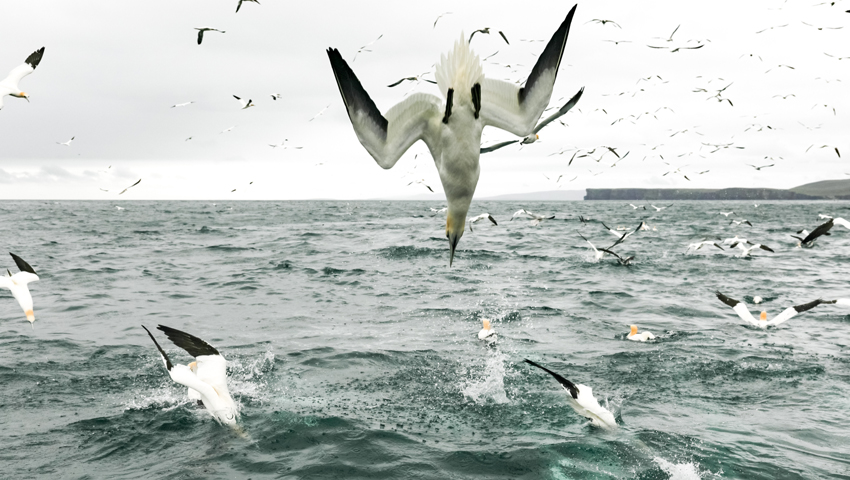AS PART of a major research consortium announced last June, the UK’s top scientists have discovered that some seabirds are demonstrating immunity to avian influenza.
The eight-strong FluMap consortium, headed by the world-leading research team at the Animal Plant Health Agency (APHA), has developed laboratory tools that can dissect the immune response in birds that have been exposed to avian influenza viruses in their lifetime.
Preliminary investigations in a small sample size of some species of seabird, including Northern gannets and shags, revealed specific immunity to H5N1 showing exposure and recovery in a proportion of birds. However, avian influenza viruses are prone to change and so antibody levels will likely decline over time with next year’s offspring not guaranteed to be immune suggesting there are no great population level benefits yet.
Scientists hope to look at the effect of antibodies on infection, to better predict the emergence of new viruses with different protein combinations in the future, allowing experts to stay one step ahead to safeguard animal and human health, given 60% of new human diseases originate in animals.
High pathogenicity avian influenza (bird flu) is a significant burden on animal health globally and threatens human health, with over 350 infected UK premises detected between 2020 and 2023. Wild bird populations have also suffered significant mortalities across multiple species and wild mammals that have scavenged dead bird carcasses have also been infected.
The consortium has also identified several genetic characteristics that explain the ability of the current H5N1 viruses to spread fast and infect a greater range of species. Research has found that multiple virus genes have switched and evolved to act together to enhance fitness to infect, transmit and persist in birds, but remain un-adapted to humans.
The consortium has mapped the spread of infection over time and made important discoveries regarding airborne transmission of the virus – determining that infectious virus can only travel short distances (less than 10 metres) and is very unlikely between farms through the air.
To further understanding of this disease, and to study immunity in a range of wild birds, an additional £3.3 million from UK Research and Innovation’s (UKRI) Tackling Infections programme and Defra has been granted.
A further £3.2 million has also been allocated for a sister consortium, focussing on the potential for human transmission. Partners from both consortia will work closely together in a One Health approach. A joined-up One Health approach aims to sustainably balance and optimise the health of people, animals and the environment, recognising that these things are interdependent. This research will allow for better understanding of the potential impacts of animal-human-environment avian influenza interactions. Cross government community collaboration is key in effectively responding to and preparing for evolving threats like avian influenza.
Professor Ian Brown, APHA’s Director of Scientific Services and project manager, said, “APHA has led this consortium of the greatest minds from eight world-leading British institutions to address gaps in our understanding of avian influenza and I am excited that we have already made some important discoveries, particularly around the genetic makeup of avian influenza viruses.
“I am pleased that with further funding this work can continue – helping us to control the spread of the disease while furthering UK animal health science and ensuring we maintain our world-leading reputation in the field.”
Biosecurity Minister Lord Benyon said, “Bird flu has been devastating on kept and wild birds. This has caused an emotional and financial toll on bird keepers and those who love our wildlife. That is why we are continuing to invest in world leading science to improve our understanding of this disease and inform future ways to prevent and control it.”
The new funding will respond to the evolving nature of avian influenza and further our understanding of:
- Transmission and infection in different bird populations, including how the virus transmits from wild birds to farmed poultry
- The gaps in biosecurity that allow the virus to penetrate premises, and how this could be addressed
- The role of immunity in wild birds in the evolution of the virus
- How the implementation of vaccination might impact outbreaks
